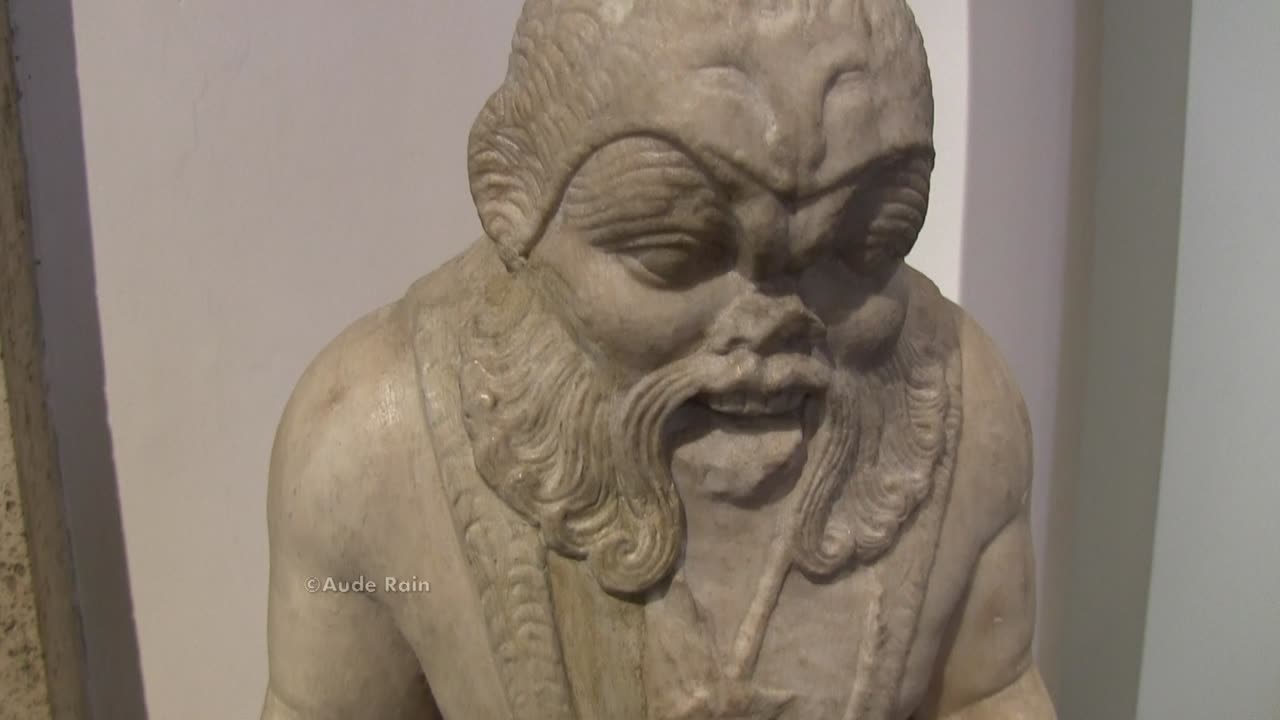Premium Only Content

Bes - Egyptian God
"The origins of Bes remain obscure. Perhaps he is a composite of up to 10 separate deities. From an art historical point of view, he is certainly a curiosity: unlike most Egyptian gods, who usually appear in profile, Bes is brazen and frontal, as well as comical. Some scholars suggest that he emerged in sub-Saharan Africa. It is possible that he began life as a lion or cat rearing on its hind paws.
Ultimately Bes was celebrated because he was never official or exclusive. Mischievous and irreverent (it was said that he could make babies laugh by pulling funny faces), he was resolutely down-to-earth – a god for commoners rather than royalty. Performers tattooed their bodies with images of Bes because of his associations with music and dancing, while prostitutes may have placed tattoos of Bes near their genitalia, in order to stave off sexually transmitted diseases.
By the end of the second millennium BC, Bes had proliferated across the Mediterranean world. Even local, non-Egyptian craftsmen produced objects decorated with his image. Early in the first millennium, the Phoenicians became big fans of Bes, as the Romans would too. Bes occasionally appears dressed as a Roman legionnaire. His rampant popularity even survived the advent of Christianity." https://www.bbc.com/culture/article/20130619-how-the-devil-got-his-looks
"Bes, a minor god of ancient Egypt, represented as a dwarf with large head, goggle eyes, protruding tongue, bowlegs, bushy tail, and usually a crown of feathers. The name Bes is now used to designate a group of deities of similar appearance with a wide variety of ancient names. The god’s figure was that of a grotesque mountebank and was intended to inspire joy or drive away pain and sorrow, his hideousness being perhaps supposed to scare away evil spirits. He was portrayed on mirrors, ointment vases, and other personal articles. He was associated with music and with childbirth and was represented in the “birth houses” devoted to the cult of the child god. Contrary to the usual rule of representation, Bes was commonly shown full-faced rather than in profile, since full-faced figures were marginal to the normal, ordered world." (https://www.britannica.com/topic/Bes )
-
 1:38:44
1:38:44
The Quartering
5 hours agoTrump's Tariffs Already Work, Blackhawk Pilot Coverup, DNC Makes Insane David Hogg Appointment
81.1K77 -
 LIVE
LIVE
Dr Disrespect
7 hours ago🔴LIVE - DR DISRESPECT - TARKOV - ZERO TO HERO RAIDS ONLY
3,161 watching -
 1:13:51
1:13:51
Candace Show Podcast
5 hours agoEXCLUSIVE! Did Ryan Reynolds Extort Hollywood Execs? | Candace Ep 143
112K134 -
 2:01:42
2:01:42
Darkhorse Podcast
5 hours agoA Germ of Truth: The 263rd Evolutionary Lens with Bret Weinstein and Heather Heying
33.4K10 -
 9:37
9:37
Silver Dragons
4 hours agoGoodbye Cheap Silver - How the Tariffs Will Change Stacking Forever
20K -
 37:33
37:33
CryptoWendyO
4 hours ago $2.68 earnedWORST DAY IN CRYPTO HISTORY $10 Billion in Liquidations!
32.9K7 -
 57:01
57:01
PMG
5 hours ago $2.15 earnedHannah Faulkner and Dr. Bryan Ardis | Don't Fall For the Bird Flu!!!
23.5K -
 1:18:00
1:18:00
Russell Brand
1 day agoUFOs, Whistleblowers, and Government Lies – The Truth with Jeremy Corbell – SF530
204K90 -
 1:57:47
1:57:47
The Charlie Kirk Show
6 hours agoThe Most Beautiful Word in English + Confirm Tulsi! | Navarro, McCain, Posobiec | 2.3.2025
193K60 -
 1:13:03
1:13:03
Michael Franzese
6 hours agoRATING Trump’s First Two Weeks In Office
54.3K25